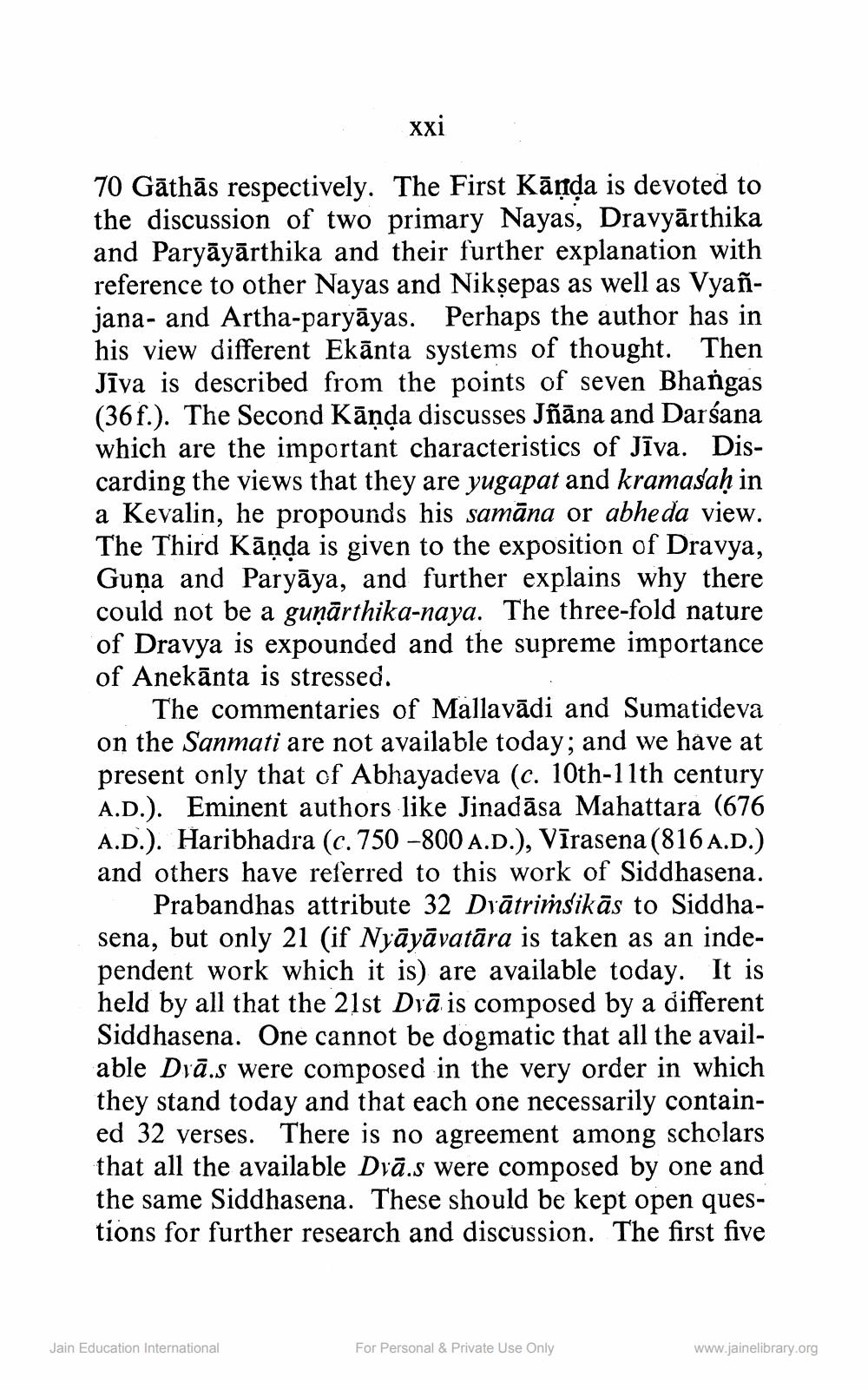________________
xxi
70 Gāthās respectively. The First Kāṇḍa is devoted to the discussion of two primary Nayas, Dravyarthika and Paryāyārthika and their further explanation with reference to other Nayas and Nikṣepas as well as Vyañjana- and Artha-paryāyas. Perhaps the author has in his view different Ekānta systems of thought. Then Jīva is described from the points of seven Bhangas (36 f.). The Second Kāṇḍa discusses Jñana and Darśana which are the important characteristics of Jīva. Discarding the views that they are yugapat and kramasaḥ in a Kevalin, he propounds his samāna or abheda view. The Third Kāṇḍa is given to the exposition of Dravya, Guṇa and Paryāya, and further explains why there could not be a guṇārthika-naya. The three-fold nature of Dravya is expounded and the supreme importance of Anekanta is stressed.
The commentaries of Mallavādi and Sumatideva on the Sanmati are not available today; and we have at present only that of Abhayadeva (c. 10th-11th century A.D.). Eminent authors like Jinadasa Mahattara (676 A.D.). Haribhadra (c. 750 -800 A.D.), Vīrasena (816 A.D.) and others have referred to this work of Siddhasena.
Prabandhas attribute 32 Dvātrimsikās to Siddhasena, but only 21 (if Nyāyāvatāra is taken as an independent work which it is) are available today. It is held by all that the 21st Dva is composed by a different Siddhasena. One cannot be dogmatic that all the available Dvā.s were composed in the very order in which they stand today and that each one necessarily contained 32 verses. There is no agreement among scholars that all the available Dva.s were composed by one and the same Siddhasena. These should be kept open questions for further research and discussion. The first five
Jain Education International
For Personal & Private Use Only
www.jainelibrary.org




